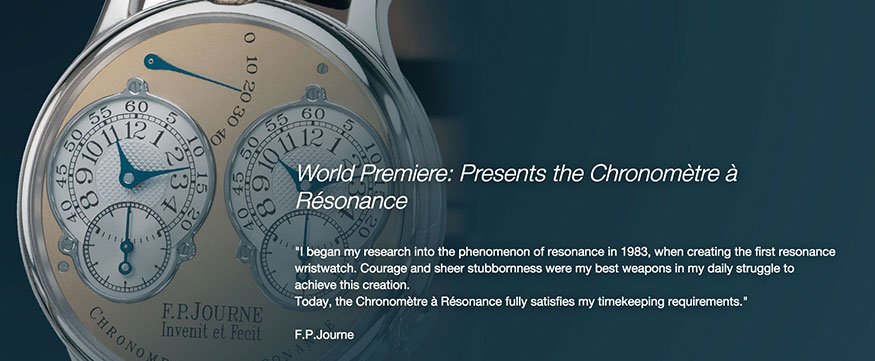F.P.Journe: Chronometre Resonance
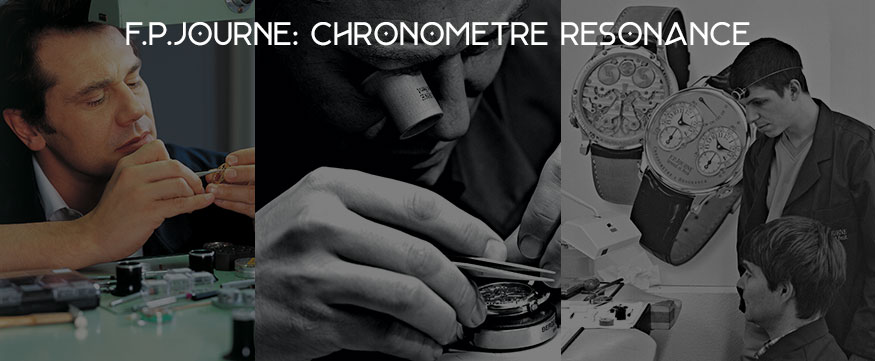
Throughout school, I had a love-hate relationship with science. I disliked chemistry and was indifferent to biology, but developed a keen interest in physics. A topic that really engaged me from the beginning was 'resonance.' By definition, 'resonance is the phenomenon that occurs when the frequency of a periodically applied force is equal to the natural frequency of the system on which it acts.' We studied examples of resonance in our daily lives - like the ability of an opera singer to shatter glass when the acoustic frequency of their voice matched the frequency of the glass object, creating a resonant effect between the two and an energy strong enough to destroy it. Another commonly used example of resonance was the radio, where adjusting the frequency of its circuit to match the frequency of the radio station we wished to listen to, achieved acoustic resonance and an emission of sound for the music to play.
Resonance in horology
A basic understanding of the way in which resonance works in place now, let's connect it to the world of horology in the mid-1600s. Starting with Christiaan Huygens, who was a physicist, mathematician and inventor. The pendulum and the formulas of centripetal and centrifugal force were just some of his inventions. Close observation of two pendulum clocks suspended from a common wooden bar revealed that irrespective of the position the pendulums started oscillating in, they would, over time, come back to moving in a synchronised fashion, with the same frequency. Unable to understand this at first, Huygens repeated the experiment several hundred times and found this to be true, over and over again.

Abraham Louis Breguet's Double Pendulum clock and the 1780 Antide Janvier Regulator Double Pendulum clock
Photo courtsey (Watch on left) - Antique Clocks Price Guide
At the end of the 18th century, Antide Janvier built a clock with two pendulums, each attached to their independent mainspring barrels and escapements, suspended from a common mount. Just as he planned, one pendulum absorbed the energy dissipated by the other to beat in perfect sync, demonstrating the effect of resonance. 30 years later, Abraham Louis Breguet created his own double pendulum clock as well as resonance pocket watches. Then, in 1983, a master watch-maker, Francois Paul Journe, inspired by his learnings from Breguet, and armed with a better understanding of resonance than Janvier and Huygens, set out to create the same resonant movement inside a wristwatch. In the year 2000, he made it happen. But before I speak of the watch and his unique feat, I think it is only fitting to learn a little about Journe's past.
F.P.Journe is one of the world's most celebrated independent watchmakers. His watches are sought after all over the world, often fetching astronomical prices at auctions. Known to be a perfectionist, he creates and releases timepieces only when he is confident that he is delivering something novel and unique. This results in a very limited number of timepieces each year.

Realisation of the Brequet Sympathique Clock by Journe, alongside his own Pendule Sympathique Clock made for Asprey in 1991
Soon after graduating from watchmaking school in Paris, he set to work on his tourbillon, something he always wanted to own. A tourbillon remains one of the most difficult complications to make and is extremely expensive even today. Unable to afford one at the time, he decided to make one. He was only 20 at the time. He accomplished the feat in five years. At 22, he built his first planetarium. I could go on about his career and creations, awards and international recognition, but for now I will focus on his creation of the Resonance.
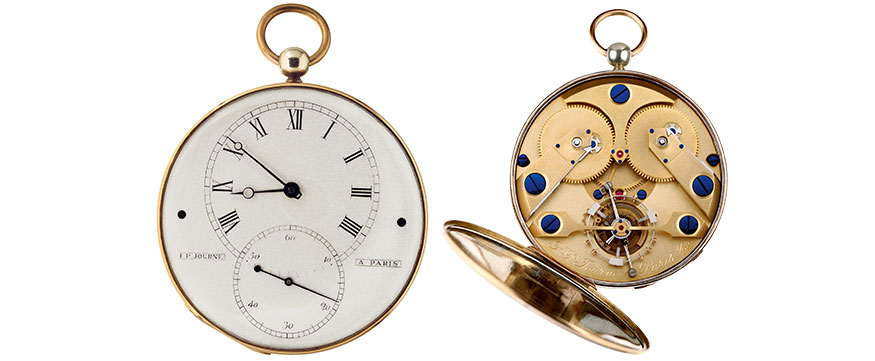
Realisation of his first tourbillon pocket watch in 1983, made entirely by hand
In 2000, 22 pieces of F.P.Journe's Chronometre Resonance were released, based on the phenomenon described earlier. In an effort to explain the movement of his watch, think back to the double pendulum wall clock. Journe's take on the above resulted in two independent escapements, each connected to their own gear train and mainspring barrel. The two escapements beat at their own oscillating frequency. He very meticulously adjusted the distance between the two free sprung escapements as well as their beat to within five seconds per day, creating the resonance effect within the movement and arguably one of the most complex and precise time keeping devices in the world.
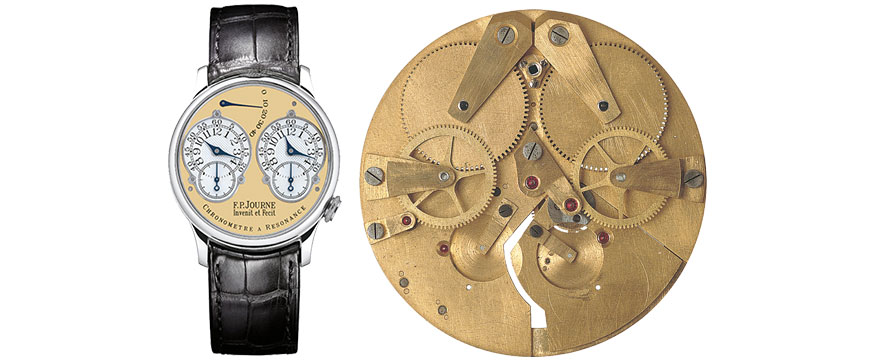
Image on right - Prototype movement by Journe made in 1983 to create resonance within the movement of a watch
The effect of resonance between the two beating balances assured the accuracy of the watch in spite of any external disturbance which would otherwise cause a negative effect on the efficiency of a traditional mechanical watch. Energy losses and possible erroneous beating of one balance wheel caused by external effects is compensated by the second balance wheel, recreating a harmony in their synchronised movement, due to the effect of resonance.
This movement was housed in a platinum case with two crowns at 12 and two o'clock, one to set each of the beautifully symmetric 12-hour watch dials and the other to synchronise each of their ticking second hands. It displayed a 40-hour power reserve through an indicator on the dial. Two separate mainspring barrels fed power down their individual gear trains to their escapements. The distance between the two balances were meticulously set by a critically important rack system creating the optimum distance and in turn, resonance. The whole package is neatly contained within a 38mm platinum case.
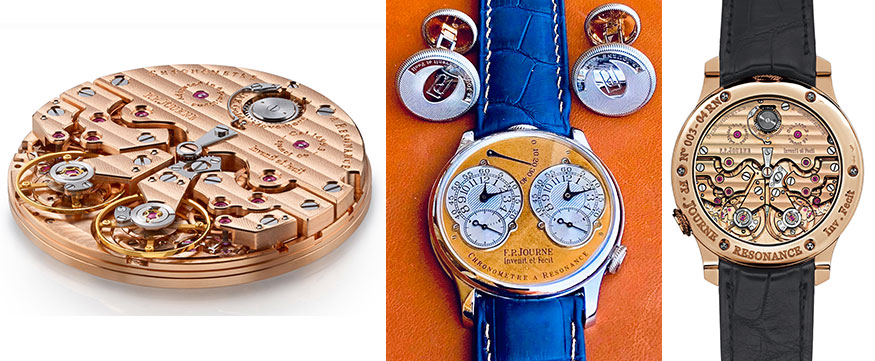
F.P.Journe and his free sprung balances were often criticised in the early 2000s. Many questioned the claim of the balances actually being in resonance with each other. Notable independent watchmaker Phillip Dufour passed remarks on how Journe had forgotten to add a few pieces to his movement, suggesting that there needed to be a physical connection between the two balance wheels just like the wooden bar of the pendulums for resonance to occur. When Journe was questioned he was both vocal and irate stating in no uncertain terms that he would not waste time proving his study of over fourteen years which had led to the creation of his Chronometre Resonance.

New and rare iterations of the first Resonance watches
Image Credit: Shani.Watch
Fun trivia: Many owners of the watch started to set the two time display sub-dials to different time zones. Journe did not take kindly to this, pointing out that the purpose behind the movement was to see two sub-dials, ticking away in unison, telling the same time in perfect synchronicity and not to create a dual time zone watch.
F.P.Journe continued to release many iterations of the same watch over the next few years but the first 22 examples which formed the Subscription series are the most prized today. The Resonance for me, was the ultimate watch. Until Journe released the newest version of the watch in 2020. More on that in part II of this blog.
